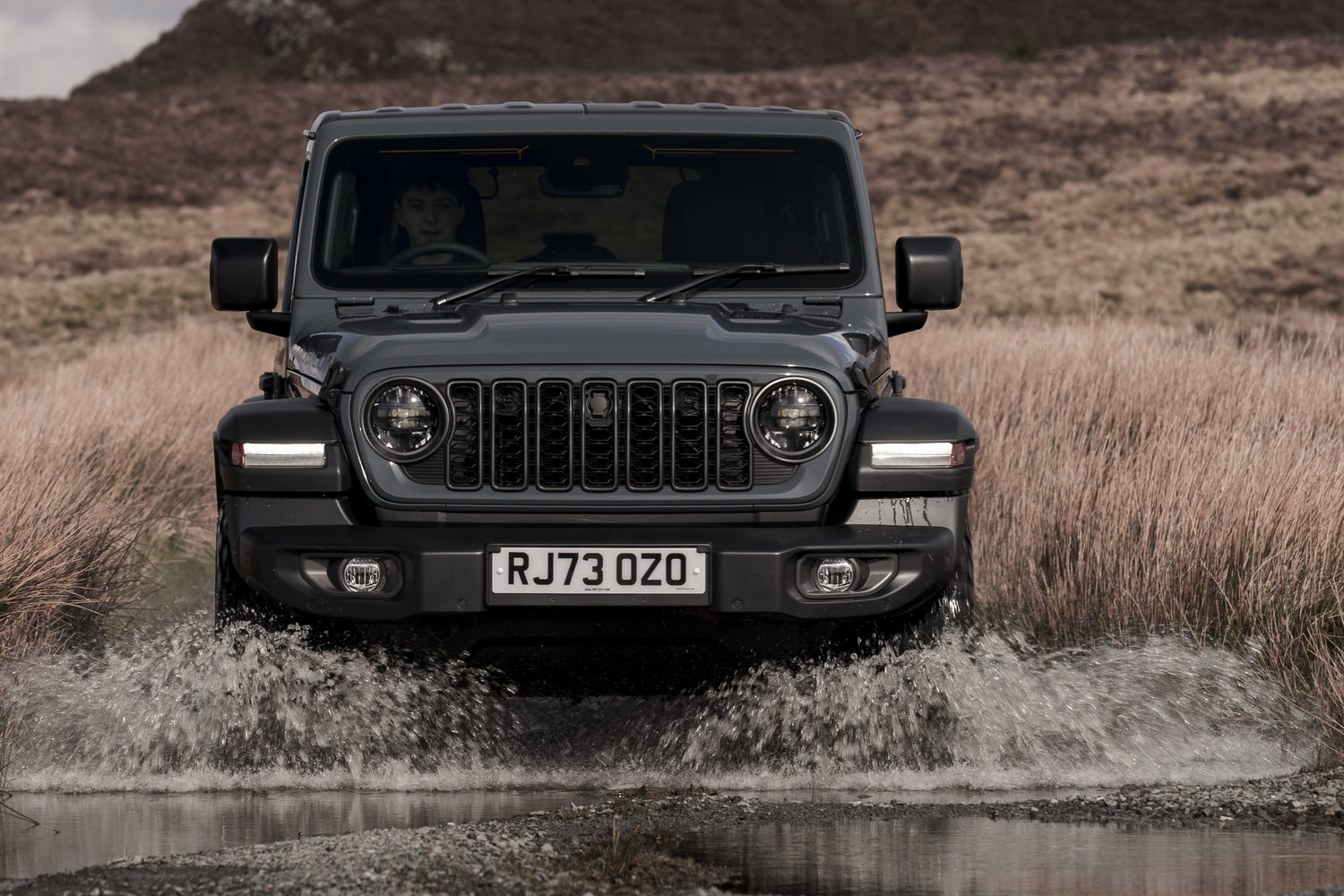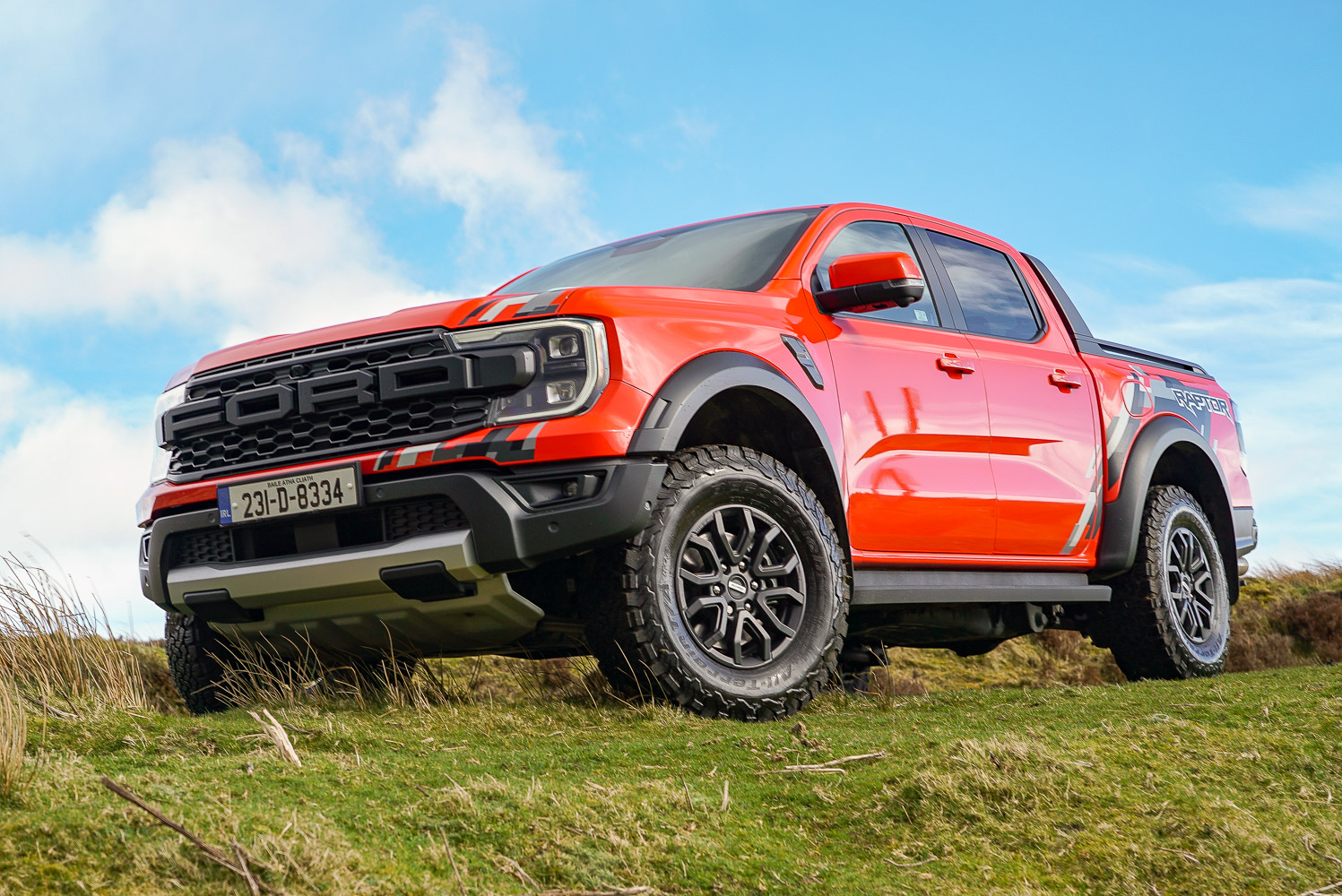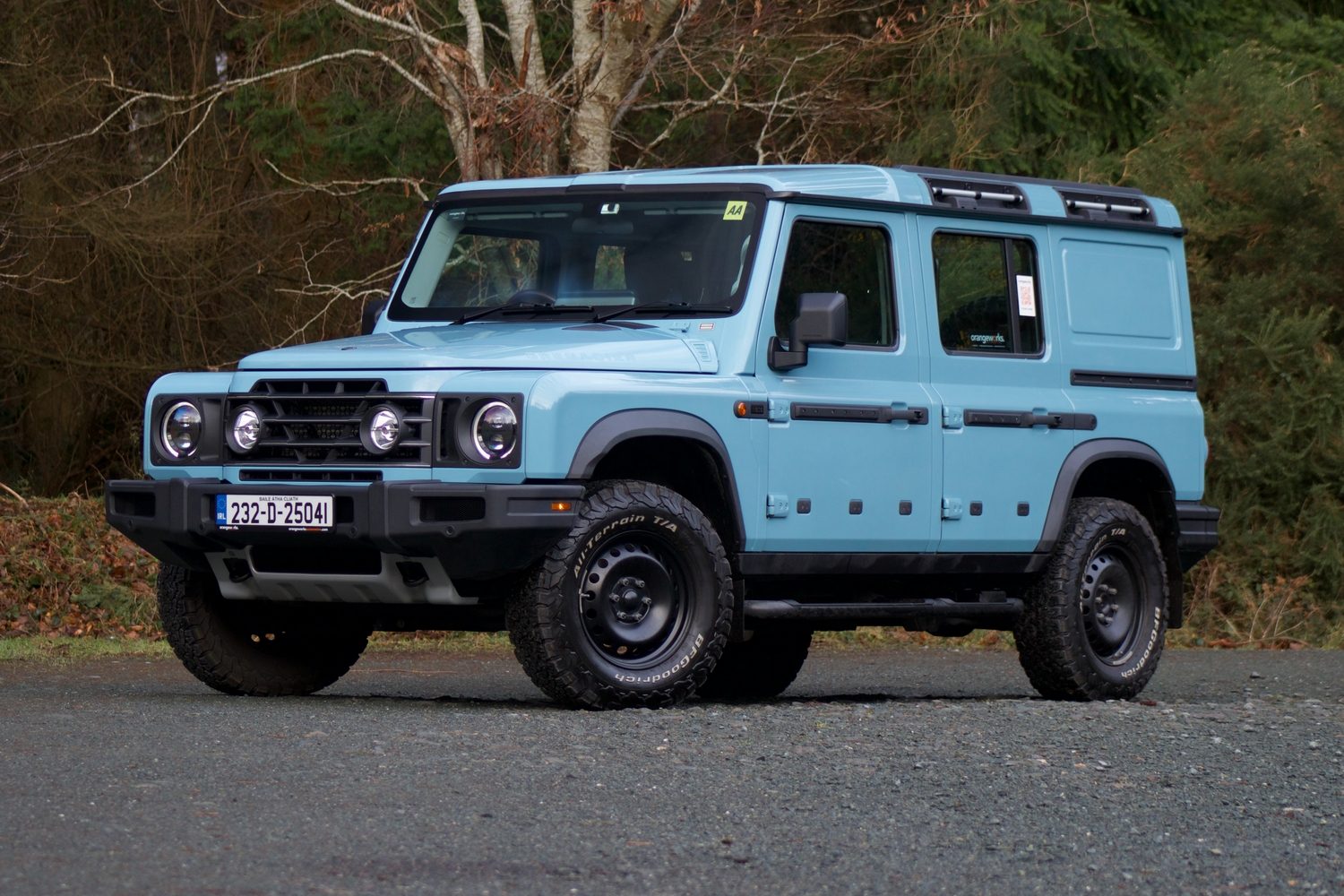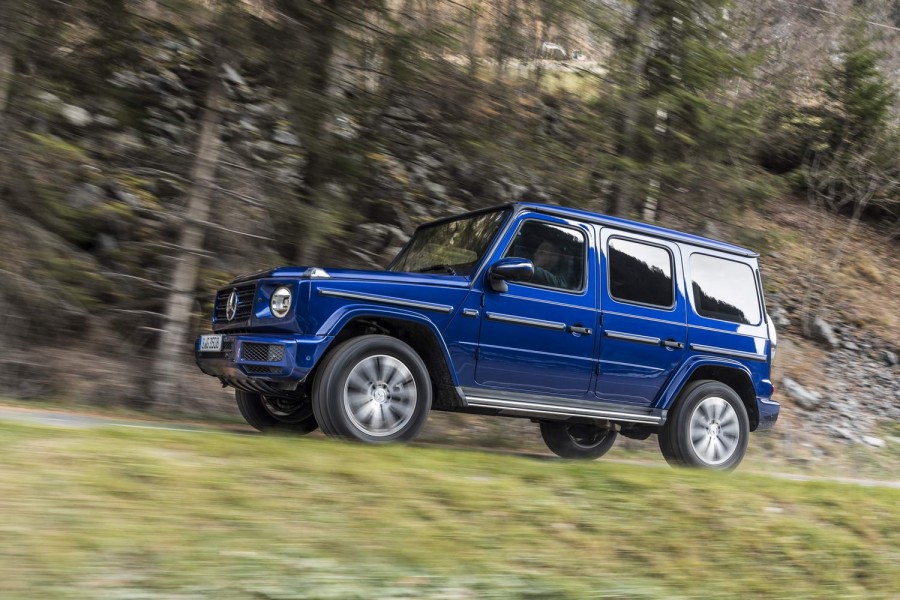Having been around for five generations and since 1986 - and able to directly trace its lineage back through the ‘CJ’ (Civilian Jeep) models all the way to the fabled Willys Jeep military vehicle from World War II - the Jeep Wrangler is something of an automotive icon. For 2024, there are subtle changes to the exterior design and improvements to the in-car connectivity, as well as even greater off-road ability thanks to a fancy new rear axle, but it remains a vehicle with a huge amount of charisma and go-anywhere ability... which means it’s a shame it’s not officially on sale here.
In the metal
![]()
Jeep sells the Wrangler in the UK only as the longer-wheelbase five-door model nowadays, which comes in two broad specifications: there’s a more luxury, road-biased one which is christened the ‘Sahara’ in various markets; and then there’s a more serious off-roader which is the ‘Rubicon’, which we’re driving here. However, we should be clear and say that any specification of Wrangler is a serious 4x4 with a heck of a lot more rough-roading capability than your regular SUV - hence why they all proudly wear ‘Trail Rated’ roundels on their front wings - so when we say the Sahara is road-biased, we mean in relation to the Rubicon and not to, say, a BMW X5.
Anyway, the 2024 changes pertain mainly to Jeep’s signature design characteristic, the seven-bar radiator grille up front. Either model has a more defined appearance for this item, with each slot having an individual frame on the new Wranglers. On the Sahara, these are finished with ‘Platinum Silver’ bezels, while the Rubicon switches that for a darker look, courtesy of a more neutral grey finish.
![]()
That moody appearance for the Rubicon’s grille ties into the rest of its body, because its removable roof panels and the flares running over its front and rear wings are also finished in black, whereas these parts are body-coloured on the Sahara. The Rubicon also gets slightly smaller alloy wheels (17s, instead of the Sahara’s 18-inch rims) but these are wrapped in more serious, chunky off-road tyres that are mud-rated. You’ve probably also noticed the massive ‘Rubicon’ decals running along the sides of the top-spec Wrangler’s clamshell bonnet.
Beyond these differences, all 2024MY Wranglers now have a ‘trail-ready stealth’ antenna integrated into the front windscreen, replacing the whip-like steel mast affair that used to rise from the front wing of the 4x4 and which, according to owners, was prone to snagging brush or tree limbs while it was off-roading. Jeep has also taken the opportunity of this mildest of facelifts to draft in four fresh designs of alloy wheel (ranging up to an optional 20-inch set) and a new colour, ‘Anvil’, bringing the total number of body paints to ten, while a set of ‘rock rails’ take the place of side steps and strengthen the 4x4’s chassis.
![]()
So, nothing drastic for 2024, then, but it remains one of the most distinctive modern vehicles of the lot. Not only does it have incredible presence and a tough-looking stance, it’s also a bizarre but loveable convertible on which you can remove all of the roof sections and even its doors, if you’ve got the time and inclination (it’s not the work of a moment to transform the 4x4 thus) - and, driven like that, the Wrangler is more like an oversized beach buggy than anything else.
Inside, for 2024 there’s a new ‘Uconnect 5’ infotainment system presented on a large 12.3-inch screen, which necessitates a redesign of the central upper dash section - gone are the old round air vents, replaced by slimmer units underneath the new display. This touchscreen is not only larger, but also said to be five times faster thanks to its (over-the-air updateable) Android operating system, plus it has enhanced features such as a customisable home screen and the ability to hook two phones up to it at once via Bluetooth. If you don’t like Jeep’s own system, of course, then the Wrangler’s system also has wireless Android Auto and Apple CarPlay connectivity, but we thought it worked well and looks snazzy too.
![]()
Further to this, Jeep has fitted 12-way powered front seats to the new Wrangler, plus a standard-fit premium cabin package that adds acoustic front glass and thicker carpets, as well as more sound-deadening in the header rail above the windscreen, the front scuttle area and the B-pillars - all aiming to give it a quieter ride. The safety kit on the 4x4 is also bolstered with side curtain airbags, greater side-impact protection in the structure, improved second-row outboard seatbelt mechanisms, and the addition of some advanced driver assist systems in the forms of Drowsy Driver Alert, Lane Departure Warning and Traffic Sign Information.
In terms of quality and space, the Jeep is very decent inside. It’s a pragmatic dash layout and the quality of the materials used is not going to have Audi’s interior engineers breaking out in a cold sweat, but it all feels nicely screwed together and there’s a pleasingly utilitarian nature to it that befits what the Wrangler is dynamically capable of. A new wrapped instrument panel with soft-touch surfaces and contrast stitching is a nice conceit, while space is admirable in both rows of the vehicle - even if the 4x4’s rear doors are quite small, making access to the back of the passenger cabin a bit of a faff, given the Wrangler’s lofty ground clearance too. A square-hole boot of 533 litres minimum is also a boon, although remember the Jeep’s rear door is side-hinged, so you need to leave a lot of space behind the Wrangler in parking bays and so on if you want to fully open it.
![]()
Driving it
The sole mechanical change for the 2024 Wrangler family is applied to this model, the Rubicon. It now benefits from what is called a ‘full-float’ Dana rear axle, which means the weight of the vehicle is transferred to the axle tube, rather than the axle shaft itself. That means the axle is then only subjected to torsional loads, allowing it to focus on transmitting the engine’s power from the driveshaft to the wheel hubs, making it more robust.
There is but one motive choice in the updated 4x4. It’s the same 272hp/400Nm 2.0-litre turbocharged four-cylinder petrol engine that was in service before. There is a plug-in hybrid (PHEV) drivetrain for the Wrangler in production, called ‘4xe’ (four-by-E), but that isn’t sold in Ireland. Indeed, the Wrangler isn’t officially on sale here at all, although it is available in the nearest right-hand-drive market (the UK) so importing one isn’t beyond the whit of anyone who’s desperate for this off-roading roughneck.
![]()
We’d understand fully if you did decide to bring one here. Driving a Wrangler is a very idiosyncratic, and enjoyable, experience. If you go into it expecting SUV-like levels of ride comfort and rolling refinement, you’re going to be sorely disappointed; this is a traditional, body-on-ladder-frame 4x4 that is primarily designed to excel away from proper roads, rather than performing its best on them.
Yet the 2024 Wrangler isn’t hopeless on the road at all. The steering is slower than you’re going to be used to if you’re coming to it from anything other than a one-tonne pick-up truck, such as the Ford Ranger, and there is obviously a fair amount of body lean in the corners on the long-travel, soft suspension. But that same suspension, along with the bubble-like mud tyres on the Rubicon, does a good job of soaking up lumps and bumps, so that even travelling through a pothole at 50km/h and more elicits no more than a muffled thump from the Jeep’s underpinnings. You do get a load of tyre ‘whoop’ from the BFGoodrich rubber, though, so if you have sensitive ears the Sahara could be a better bet.
It’s also an engine with enough potency and mechanical smoothness to bless the Wrangler with a surprising turn of speed, as evinced by its 7.6-second 0-100km/h time. Admittedly, it never quite feels as fast as the on-paper numbers, because the driver of a Rubicon has to work around several impediments that would otherwise elicit an immediate response to a bit of extra throttle - a smidge of turbo lag, the speed of the eight-ratio auto, the hook-up of the differentials, the drag of those meaty tyres and the sheer lack of aerodynamic concessions the Wrangler’s boxy form impresses on airflow around its body. So, it doesn’t feel massively happy being hustled along, while the four-cylinder engine can sound a little coarse if it gets near its redline.
But with a relatively low kerb weight for a vehicle of this size, class and capability (it’s less than 2.1 tonnes), the Wrangler Rubicon is certainly quick enough. The background tyre holler and some wind blustering around its vertical windscreen and gigantic door mirrors aside, it’s also reasonably quiet and comfortable at faster speeds, although good luck with the fuel economy - you’re going to be lucky to achieve 14 litres/100km if you start driving it quickly.
![]()
Nevertheless, on the road the Rubicon is not a hopeless case. It’s deeply charismatic and impressively calibrated, to the point that you’d happily go long distances in it if only Jeep saw sense and fitted a ‘clutch’ rest in the footwell to prevent the aching agony of your redundant left leg.
Anyway, the Wrangler’s preferred environment is away from metalled roads, and it is not overplaying things to describe it as thoroughly imperious. Jeep laid on an incredibly daunting off-road trek for us that included some river fording (the Wrangler will wade through 760mm of water at up to 8km/h) and some truly huge rock crawls up some serious ascents.
And it monstered them. The Rubicon is the off-road specialists’ choice, because it has better approach/breakover/departure angles than the Sahara (36/20.8/31.4 degrees respectively) and a 10mm-higher maximum ground clearance of 252mm, as well as a greater 4:1 ‘4Lo’ ratio crawler gear, the ability to disconnect its front sway bar for better off-roading control, the new floating rear axle, those mud-spec tyres, and locking differentials on both its front and rear axles, to go with the centre-locking differential that the Sahara already comes with.
![]()
Thus equipped, it feels like the Wrangler could go anywhere. In fact, driving it most of the time in 2WD Hi mode, for finished roads and flatter gravel tracks, we were instructed to put it into 4Hi and then 4Lo at places, just to demonstrate what it could do. Yet there was one vertiginous rock crawl it scrambled up that, afterwards, the off-road guides who were taking us round the course admitted it managed to do in just 2WD mode under their care. So even the off-roading we did in it wasn’t really taxing it to the limit. But all you need to know is that, for anyone’s even half-reasonable off-roading needs here in western Europe, the Wrangler Rubicon is going to have the job comfortably covered.
What you get for your money
As we’ve said, the Wrangler isn’t officially on sale in Ireland, so your best bet is importing one. But be warned that won’t be a cheap enterprise, not least because the 4x4 emits 250g/km as a Sahara and 269g/km as this Rubicon, which means either of them are going to be €2,400 a year to tax and they’ll incur a band 20 import VRT rating (the maximum 41 per cent).
That’ll still probably work out less than the likes of the Land Rover Defender, Mercedes-Benz G-Class and the incoming all-new Toyota Land Cruiser, though, all of which are ideologically similar - as well as the Ineos Grenadier. For your money, a Wrangler Sahara comes with the 12.3-inch infotainment, 18-inch wheels, leather upholstery, power-adjustable and heated front seats along with a heated steering wheel, a nine-speaker Alpine Premium Audio, keyless entry and go, front and rear parking sensors with a reversing camera, and much more.
![]()
The Rubicon adds the serious off-roading kit mentioned in the driving section, its unique exterior styling, 17-inch wheels, Nappa leather seats, an off-road camera system (360-degree views) and auxiliary switches.
Summary
![]()
You don’t buy a Jeep Wrangler - and certainly not this Rubicon - because you think it will be exceptional on the road. It isn’t; it’s by no means bad, you understand, but it doesn’t drive in a manner anything like a cultured, high-end SUV of similar money would deliver as an alternative. You instead buy the big Jeep for its indomitable character, its immense sense of fun and its nigh-on unbeatable off-road performance. You might not scratch the surface of what it is capable of here in Ireland in that last regard, but then you could say the same thing about people who buy supercars and drive around city streets at night posing in them at 30km/h - and they seem happy. All told, the Wrangler is a magnificent creation and, despite its high imported price, the 2024 model year updates ensure it continues to be Jeep’s finest product by some distance.





